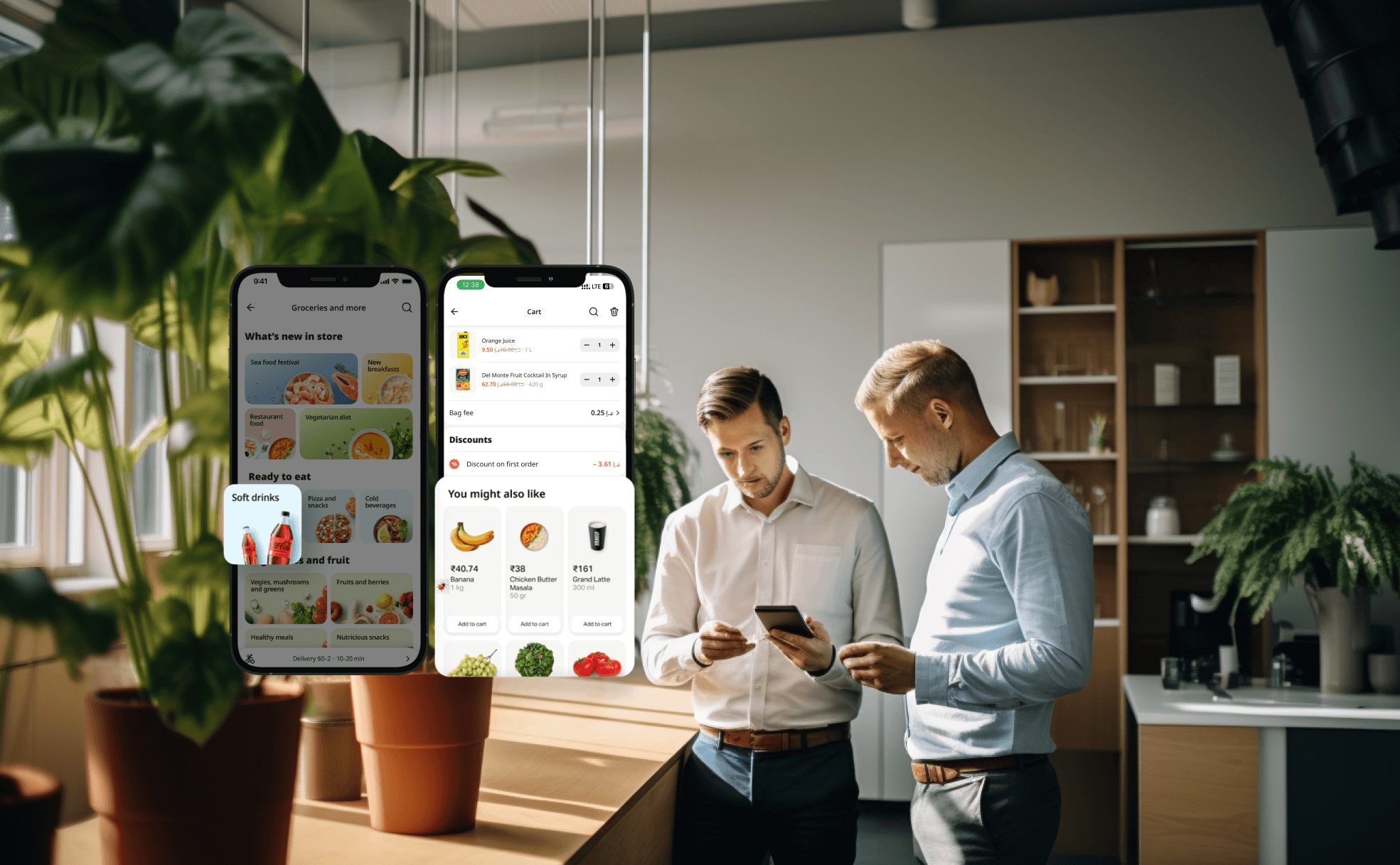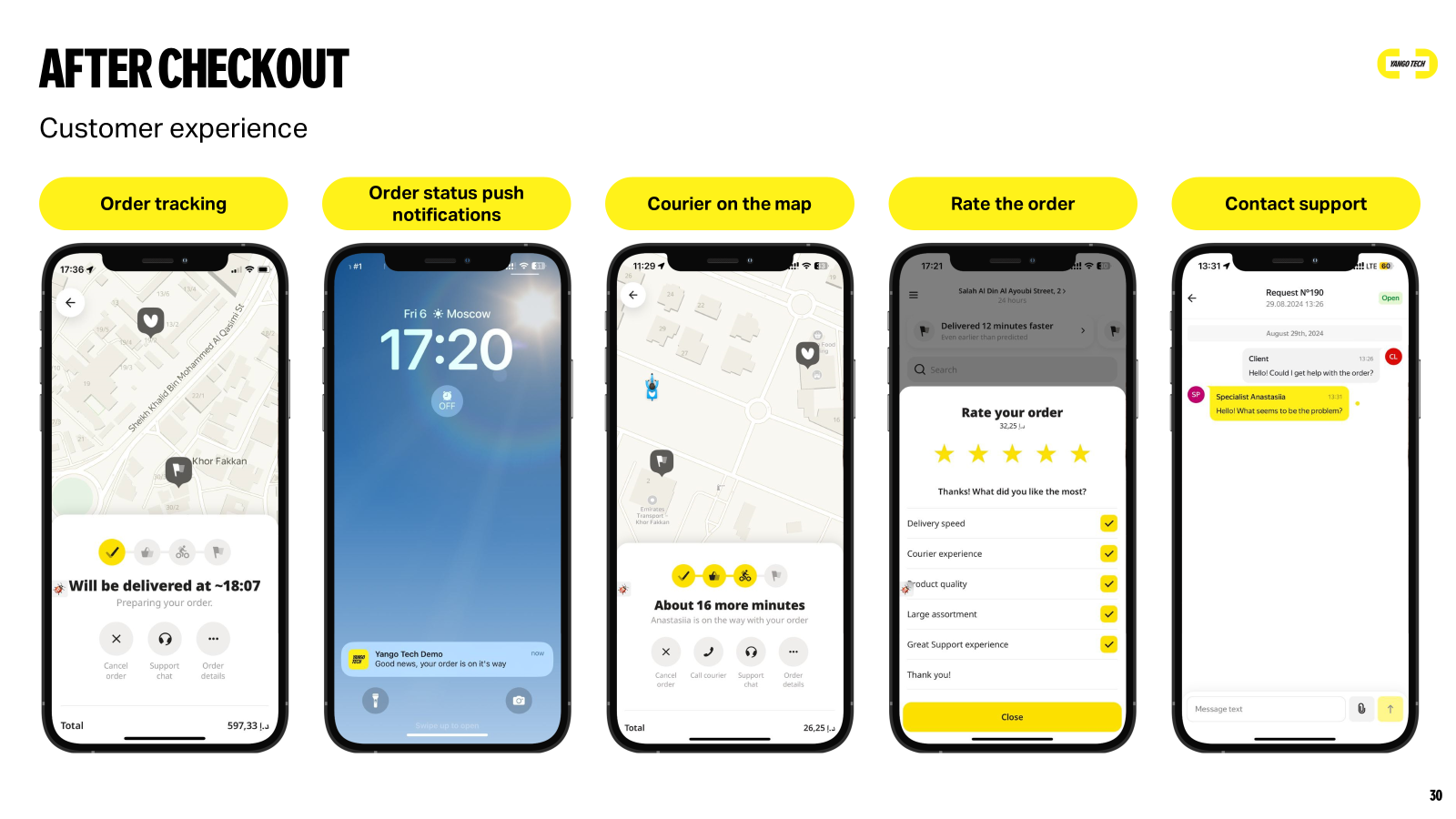Yango Tech and Surtifamiliar Partner for Next-Generation AI-Powered Grocery E-commerce in Colombia


The rise of on-demand services has reshaped how customers shop, especially for groceries. The global food & grocery retail market was valued at USD 11,932.5 billion in 2023 and is expected to grow at a compound annual growth rate (CAGR) of 3.2% from 2024 to 2030. In order to be a part of this growth, grocers must establish an online presence, especially mobile applications for ordering online, directly from grocery stores.
Many businesses now seek to create grocery delivery apps that offer convenience, speed, and user-friendly interfaces. But how do you build a grocery delivery app that stands out in this competitive market? This guide will cover business models, essential features and the steps required for app development including the cost involved.
Selecting the right business model is crucial to the success of your grocery delivery app. Different business models offer varying degrees of control over inventory, delivery logistics, and profit margins. Here’s a more comprehensive look at the business models you can adopt:
The aggregator model serves as a marketplace where multiple grocery stores are brought under one platform. Customers can view and select from multiple stores, place their orders, and the app facilitates the delivery. This model does not require the business to manage its own inventory, making it scalable and less capital-intensive. However, the business must maintain strong partnerships with local grocery stores and ensure the quality of service from third-party delivery teams.
Example: Instacart
Instacart uses the aggregator model to connect users with local stores, allowing customers to select products and have them delivered within hours.
In the inventory model, the business manages and owns its own stock. Groceries are purchased, stored in warehouses, and listed on the app. Orders are fulfilled directly from the company’s inventory, which allows for greater control over quality, pricing, and availability. This model may require significant investment upfront in terms of warehouse space, inventory management, and delivery logistics. However, it allows the company to cut out the middleman and take full control of the supply chain.
Example: Amazon Fresh
Amazon Fresh utilizes this model, offering a variety of grocery products stored in their own facilities and delivered directly to customers.
Some businesses opt for a subscription model where users pay a recurring fee to access exclusive services such as free or faster deliveries, special discounts, and personalized promotions. This can help to ensure a steady revenue stream while offering customers a high level of service.
Example: Walmart+
Walmart+ offers customers unlimited free delivery on groceries for a monthly subscription fee.
The hyperlocal model focuses on catering to a specific geographic area, usually within a city or neighborhood. The app connects local grocery stores with customers living nearby, ensuring faster delivery times. The strength of this model lies in its focus on community-based service, building strong local partnerships, and offering a more personalized delivery experience. However, scaling this model can be challenging, as it requires intensive localized logistics.
Example: Zomato Grocery
Zomato, primarily a food delivery platform, has implemented the hyperlocal model for its grocery delivery service in several cities.
In this model, businesses opt for a pre-built grocery delivery app solution that can be customized and branded according to their needs. This helps to speed up the launch process while allowing for flexibility in features and branding. The app developer provides the software infrastructure, and the business only needs to focus on delivery logistics and grocery sourcing.
Example: Yango Tech
SaaS companies that provide white-label applications offer pre-developed solutions that are tested, highly customizable, and suitable for businesses looking to launch quickly without developing their own platform from scratch.
In this model, the business acts as a marketplace where customers can purchase groceries from different suppliers or independent sellers. Delivery is typically carried out by independent contractors, and the business takes a commission from each sale. This model is highly flexible but requires a strong reputation and trust among users.
Example: Shipt
Shipt uses this model by allowing independent contractors to deliver groceries to customers in exchange for commissions.
A successful grocery delivery app must be feature-rich to ensure a seamless user experience. These features should cater to both the end-users and the business by making the shopping process as simple and convenient as possible. Here's an expanded list of must-have features:


Creating a successful grocery delivery app involves several key steps:
Conduct thorough research to understand your target market and competition. Look at existing apps to identify gaps in services or features.
The success of your app depends largely on your team. You’ll need skilled developers for both Android and iOS platforms, UI/UX designers, and project managers. Choose between hiring an in-house team or partnering with a software development agency.
Once the team is assembled, the next step is to design the app’s layout. Focus on a user-friendly design that caters to the specific needs of your target audience. Use wireframes and prototypes to test and validate your ideas.
After designing, start the actual app development process. This involves writing code for both the mobile and backend infrastructure, including data management, customer accounts, payment gateways, and delivery logistics.
Before launching, thoroughly test the application for bugs and performance issues. Ensure the app works smoothly on various devices and under different network conditions.
Once the app is ready, launch it on the iOS App Store and Google Play Store. Implement a strong marketing strategy that includes social media, influencers, and email campaigns to attract customers.
The cost of developing a grocery delivery app can vary depending on several factors, including the app’s complexity, number of features, and the location of your development team.
A basic grocery delivery app with essential features could cost between $25,000 to $40,000, depending on the location and expertise of the development team. This typically includes features like product listings, search, shopping cart, and basic payment options.
If you plan to include refined features like real-time delivery tracking, push notifications, or an in-app chat support system, the cost may range from $80,000 or more.
In addition to the initial development cost, regular updates, bug fixes, and server costs must also be factored in. Expect to allocate about 20-30% of the initial development cost for ongoing maintenance.
Developing a grocery delivery app can yield significant benefits for both businesses and customers:
Customers enjoy the convenience of shopping for groceries from their homes, saving time and effort.
With an online platform, you can reach a wider audience, including those in remote areas. A grocery delivery app allows your business to serve customers who may not have access to physical stores.
A well-designed application with personalized features, offers, and loyalty programs can enhance customer retention.
Through efficient management tools like inventory tracking, order processing, and customer account management, a grocery delivery app streamlines your operations.
By analyzing customer behavior and purchase patterns, you can gather valuable data to improve your offerings and services.
In conclusion, creating a grocery delivery app is a valuable investment that not only enhances the shopping experience for customers but also offers businesses an opportunity to expand their market reach and streamline their operations. Following the steps outlined in this guide and choosing the right business model will help you succeed in this competitive market.